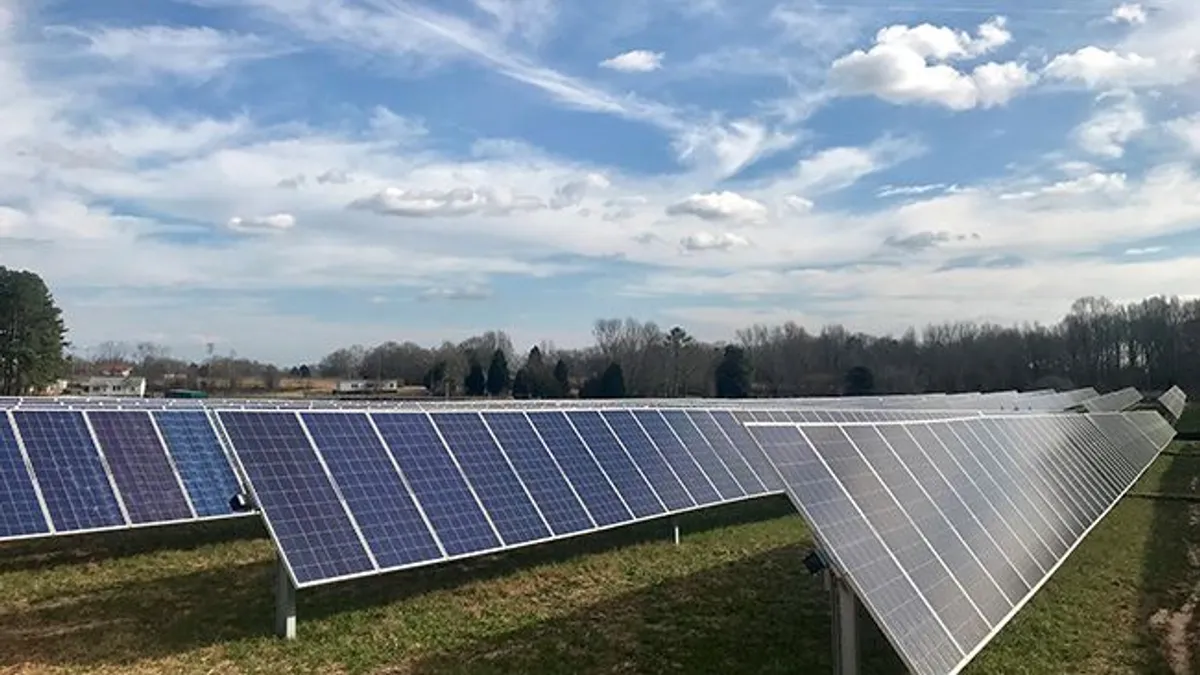Dive Brief:
-
Duke Energy on Tuesday committed to neutralizing its carbon emissions entirely by 2050, and cutting emissions in half by 2030.
-
The utility says it is the largest power generator to announce a 100% carbon free goal and plans to double its renewable energy portfolio by 2025, up 10% from its previous goal. But critics say Duke's continued reliance on natural gas could jeopardize its longer term plans, and leave investors with stranded infrastructure assets.
-
"The carbon-free by 2050 is right up there with some of the best 2050 goals in the industry," Dan Bakal, senior director of electric power at Ceres told Utility Dive. "The 50% by 2030 is not as strong as other companies … And we think there's some cause for concern with the role that they see natural gas playing in their future."
Dive Insight:
Competitive renewables and natural gas prices are allowing utilities to become more ambitious about their carbon reduction goals, but some observers caution that long-term gas investments can threaten those ambitions. Duke maintains that natural gas remains key to the utility's clean energy future, however.
"The combination of sustained, low natural gas prices, falling renewables prices and technological developments leads us to believe that we can challenge ourselves further and transition faster than we previously believed," Duke Energy spokesperson Phil Sgro told Utility Dive in an email. "Natural gas is critical to retiring coal, and new infrastructure certainly plays a role in the transition to a low-carbon future. We'll continue deploying low-cost natural gas to speed the transition from coal and maintain reliability."
Utilities are often more "comfortable" with natural gas buildouts, because that's how the utility business model has traditionally best worked, but that trend is shifting, according to Bakal.
Falling prices for energy storage and renewables, coupled with demand side management threaten to undercut natural gas assets over the next decade, a report from the Rocky Mountain Institute found last week. And investors are becoming more conscious of the lessons-learned from the coal industry's rapid decline and the consequent stranded coal plant assets across the country.
"There are always some investors that are more of the short term traders that might see some net positive in short term investments," said Bakal. "But we just see the trend being toward more taking the long view and also learning from past mistakes where assets have been stranded and investors often end up holding the bag."
The utility's subsidiary, Duke Energy Progress, which serves North and South Carolina, last week filed an integrated resource plan that called for its additional 2.2 GW of projected load to be almost entirely met by natural gas, drawing criticism from clean energy advocates.
But the utility, which generates 54 GW across six states, is making modifications to its current resource plans on a state-by-state basis and the "steps and timeline for this transition will be unique in each state," said Sgro. "[W]e plan to advocate for sound public policy that advances technology and innovation. This includes advanced renewable energy, longer-lasting storage, new nuclear technologies, low- and zero-carbon fuels and effective ways to capture carbon emissions."
Increased renewable portfolio standards, green tariffs for corporate renewables procurement and greater electrification are all policies the utility should support if it wants to see state-level change, said Bakal, while long term plans should focus on earlier coal plant retirements, energy efficiency programs and greenhouse gas reduction "as a key component of grid modernization."
In total, Duke Energy emits 104.62 million short tons of carbon annually, with coal making up 75.95 million short tons and natural gas 28.26 million. Duke has reduced its carbon emissions 31% since 2005 and its 11 GW of nuclear power will be critical to meeting its carbon reduction goals, according to Sgro.
Correction: An earlier version of this article incorrectly said Duke plans to double its renewable energy portfolio by 2030. The company plans to double its renewables by 2025.















